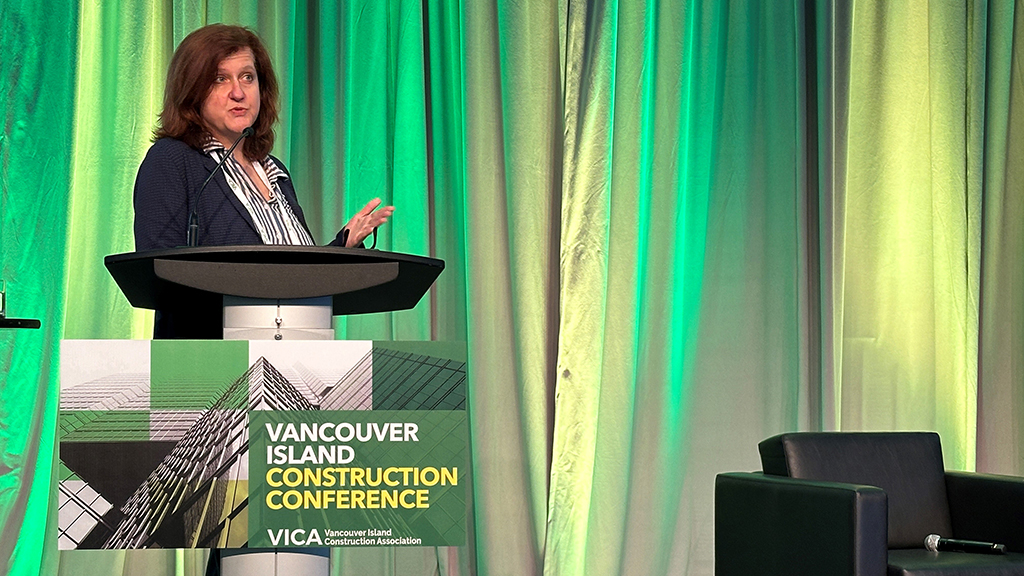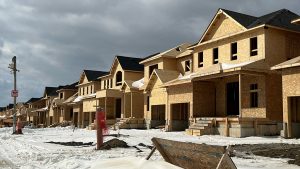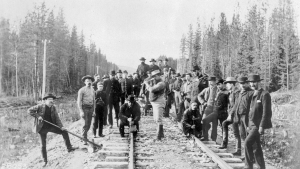Vancouver Island’s economy will have to rely on innovation to grow past current demographic and economic trends.
MNP Consulting Services partner Susan Mowbray gave an overview of Vancouver Island’s economy and future opportunities for growth in a session titled, Building Tomorrow – The Need For Enhancing Productivity in Construction at the Vancouver Island Construction Association’s (VICA) recent conference Victoria.
Mowbray pointed out the population of Vancouver Island has increased by 20 per cent over the last decade with a concurrent rise of pressure on infrastructure.
“Right now we’re at a crossroads where we haven’t been able to keep pace with demand, so going forward we really need to think about how we can do things differently so we can address some of these pressing concerns that are starting to affect our long-term economic prospects,” she said.
As Canada emerged from the pandemic lower levels of economic growth became the norm, she added, which is also a global issue. But Canada and B.C. also suffer from a lack of flatlining productivity.
“What that means is going forward our standards of living aren’t going to rise. In fact they may start to fall which has implications for the well-being of our population,” Mowbray said.
A rectangle instead of a pyramid
She shattered a popular myth that Vancouver Island primarily attracts retirees and said most people who emigrate to the region are in their prime working years and move for employment opportunities, a suitable environment to raise a family and “a place that’s less expensive than Vancouver or Toronto.”
The presence of families and an aging populace overall means an increased demand for infrastructure, she cautioned.
“Instead of a pyramid (of population and age) we have a rectangle. That changes the mix of what we’ll need to provide. We’ll need a lot at both ends of the spectrum, more schools but also more health care facilities and supports for seniors. So what does that look like going forward? How will we build that infrastructure to support this population?” Mowbray said.
“Those companies that take the leap now and in the near term will be the companies who are still around 10 years from now, whereas companies that do things the same way they’ve always been done are going to get left behind.”
Post-pandemic takeaways
The pandemic acted like a catalyst, forcing companies to change how they operate. Many companies have stuck with new practices as COVID-19 has receded as a threat, citing a construction company interviewed for her research that focused their resources on a group of trades on an assigned day to comply with physical distancing protocols.
“What they found is things got done more quickly. It lowered their costs and shortened their timelines. They kept doing it when distancing requirements were removed. But without the catalyst of COVID, they would have never explored that,” she said.
Mowbray said the combination of not keeping up with infrastructure demand or addressing the labour shortage means innovation is the best option.
Another rapidly growing area, she said, is artificial intelligence (AI), which has current benefits for the construction industry by analyzing patterns to make the permitting process more efficient or speed up workflows.
“You can also combine it with other industries such as drones to help with quality assurance, so drones collect onsite data, AI does the initial assessment and flags quality assurance issues. Then humans can step in and figure out what to do,” she said. “It can also be built in not just at the end but at various stages, reducing the amount of rework that needs to be done.”
AI doesn’t mean losing one’s job, she added, but it may mean less people being hired in future for that job while others are hired for different work.
“I don’t think you should fear AI. You should fear the people using AI you’re competing with,” Mowbray said.
Check out our other VICA conference coverage here.





Recent Comments